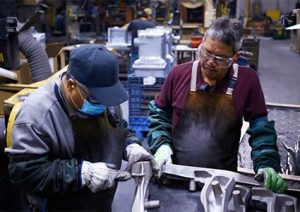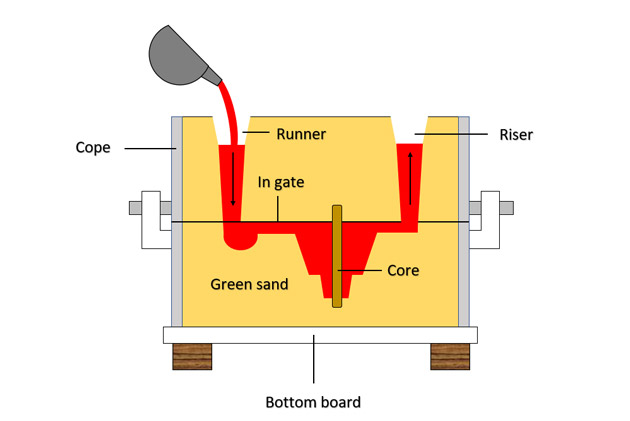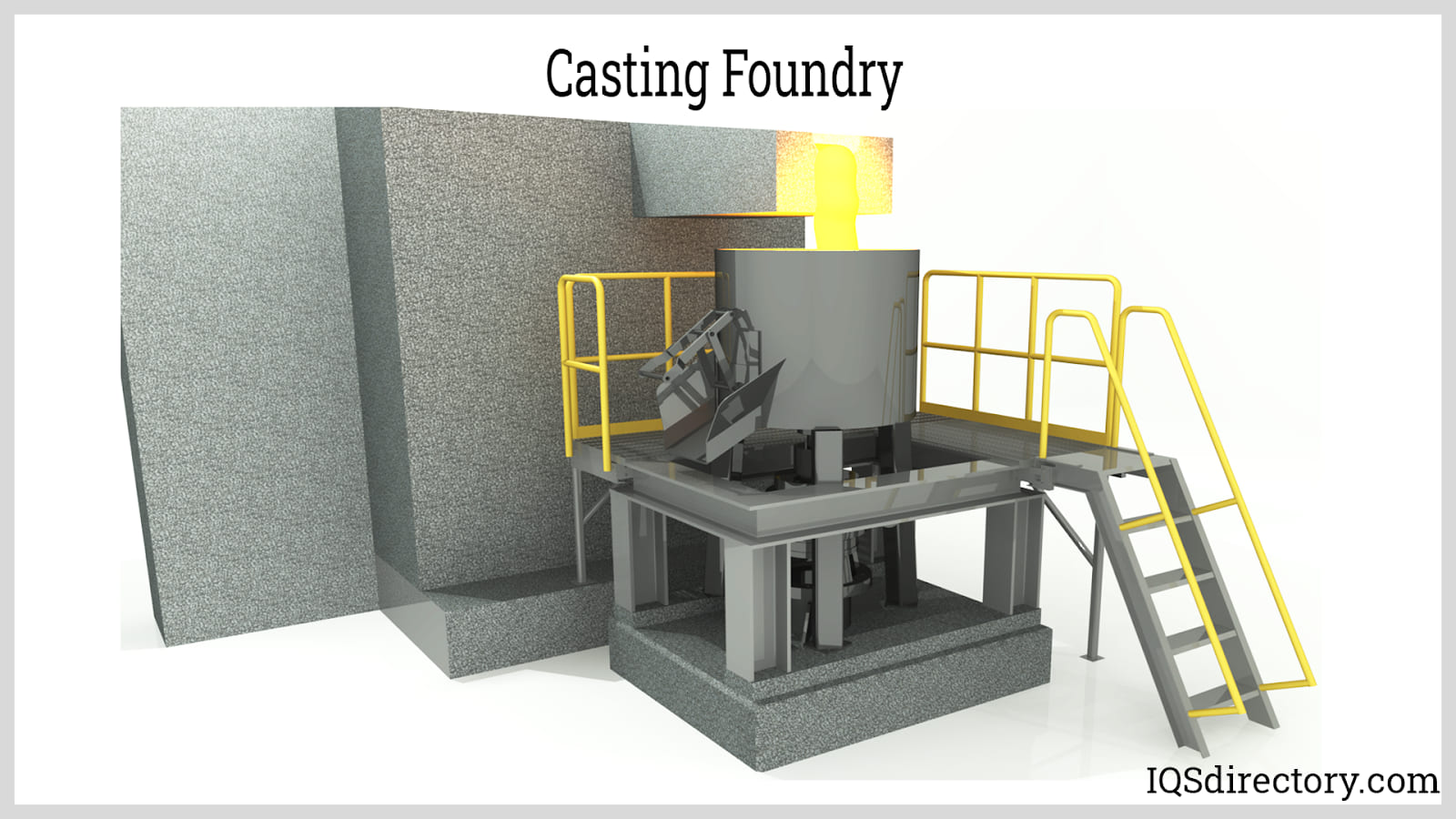How Aluminum Foundry Contributes to Innovations in Aerospace Engineering
Aluminum shops are integral to innovations in aerospace design. They produce light-weight, high-strength components that are vital for modern aircraft. Via sophisticated spreading methods, these shops create complicated geometries that boost structural honesty. Additionally, the growth of remarkable Aluminum alloys supports the industry's emphasis on gas efficiency and sustainability. Obstacles continue to be in the manufacturing process. Recognizing these elements exposes the extensive impact of Aluminum on air travel's future.
The Importance of Lightweight Materials in Aerospace Design
As the aerospace market proceeds to advance, the importance of light-weight products becomes progressively apparent. The demand for performance and sustainability drives designers to focus on the use of materials that minimize general weight without endangering architectural stability. Light-weight products, specifically Aluminum, play an important function in improving gas effectiveness, enhancing haul ability, and boosting the overall performance of airplane.
The assimilation of these products permits for ingenious styles, allowing makers to produce more aerodynamic forms that can withstand severe problems. The reduction in weight not only lowers functional prices yet likewise contributes to a reduced ecological impact, aligning with global efforts toward sustainability in aviation.
Advanced Spreading Techniques in Aluminum Foundries
Advanced casting techniques in Aluminum shops play a critical duty in aerospace engineering by enabling the manufacturing of specific and light-weight elements. Developments in mold and mildew layout and precision spreading procedures are crucial in attaining suitable performance and architectural honesty. Additionally, the growth of lightweight alloys boosts the total effectiveness and effectiveness of aerospace applications.
Cutting-edge Mold Layout
Innovative mold and mildew design plays an important duty in the efficiency and performance of Aluminum foundries, specifically within the aerospace industry. By leveraging sophisticated products and techniques, contemporary mold and mildews can be engineered to hold up against heats and pressures, making certain peak performance during the casting process. These layouts typically incorporate complicated geometries that enable the production of light-weight yet structurally sound parts, vital for aerospace applications. In addition, using computer-aided style (CAD) software program facilitates exact modeling, enabling factories to refine and replicate mold and mildew designs before physical manufacturing starts. This not only boosts the high quality of actors parts however additionally decreases waste and preparation, causing substantial cost savings. Generally, cutting-edge mold and mildew design is a foundation of progression in Aluminum Foundry modern technology for aerospace design.
Accuracy Casting Procedures
The performance of innovative mold designs flawlessly integrates with accuracy spreading processes, which are essential for generating high-quality Aluminum components in aerospace engineering. These processes, consisting of sand spreading, pass away casting, and investment spreading, ensure the creation of complicated geometries with tight resistances. Advanced methods like vacuum cleaner spreading and pressure pass away casting improve the stability and surface finish of the final products. Precision spreading decreases product waste while optimizing the mechanical buildings of Aluminum, important for aerospace applications. In enhancement, using real-time tracking and progressed simulation tools during the spreading process allows for instant adjustments, leading to enhanced quality assurance. Collectively, these precision spreading procedures placement Aluminum foundries at the leading edge of aerospace advancement, sustaining the market's need for dependability and efficiency.
Lightweight Alloy Growth
As aerospace designers look for to enhance fuel effectiveness and performance, light-weight alloy growth ends up being a crucial emphasis in Aluminum factories. These foundries use advanced spreading methods to develop alloys that give premium strength-to-weight ratios. Technologies in alloy structure, including the consolidation of components like lithium and magnesium, allow the manufacturing of materials that endure extreme problems while decreasing general aircraft weight. Methods such as die casting and investment spreading help with the precision production of intricate shapes, which are critical for aerospace applications. Additionally, continuous research study intends to optimize these alloys for enhanced mechanical residential or commercial properties and increased resilience. By focusing on light-weight alloy growth, Aluminum factories greatly add to the advancement of aerospace engineering, paving the way for extra efficient and sustainable aircraft layouts.

Enhancing Structural Integrity Through Aluminum Parts
Aluminum components use significant benefits in boosting structural integrity within aerospace engineering. Their lightweight nature adds to overall performance while keeping strength, which is important for airplane performance. Additionally, the anxiety resistance properties of Aluminum assistance ensure the toughness and dependability of aerospace frameworks under various functional problems.
Lightweight Product Conveniences
While standard products frequently jeopardize weight for toughness, utilizing Aluminum components in aerospace design offers substantial advantages in architectural honesty. Aluminum's light-weight nature adds to overall layout effectiveness, enabling more structured airplane that eat less fuel, therefore boosting sustainability. The product's excellent strength-to-weight proportion guarantees that elements maintain sturdiness without including unnecessary mass. This quality fosters improved performance and dexterity in flight, along with optimized haul abilities. In addition, Aluminum's resistance to corrosion lengthens the life-span of aerospace structures, decreasing upkeep expenses and boosting security. As makers increasingly embrace Aluminum alloys, the aerospace sector experiences a transformative shift towards much more effective and efficient design solutions that focus on both efficiency and ecological duty.
Anxiety Resistance Residences
Although various products have special residential properties, Aluminum's phenomenal tension resistance stands out as a vital consider enhancing the architectural stability of aerospace elements. This resistance plays an essential duty in guaranteeing that airplane can withstand various operational stresses, including tiredness, influence, and ecological conditions. Aluminum alloys, especially crafted for aerospace applications, display high tensile strength while keeping lightweight features, enabling engineers to make much more reliable structures - Aluminum Foundry. Additionally, the ability of Aluminum to withstand cyclic loading without significant contortion adds to the long life and reliability of aerospace components. As developments continue in Aluminum Foundry techniques, the development of stress-resistant Aluminum parts guarantees additional improvements in performance, safety, and performance across the aerospace sector, solidifying Aluminum's function as a preferred material moved here in modern-day engineering
Fuel Effectiveness Improvements Driven by Aluminum Innovations
As the aerospace sector looks for to boost gas efficiency, cutting-edge usages of Aluminum have become a necessary option. Aluminum's lightweight nature especially minimizes airplane weight, enabling reduced gas usage during trip. This reduction in weight is vital, as also tiny declines can cause considerable enhancements in general gas economic climate.
Advanced Aluminum alloys, created for boosted strength and durability, allow suppliers to develop components that maintain structural honesty while lessening mass - Aluminum Foundry. In addition, the integration of Aluminum in airframes and engine parts facilitates boosted aerodynamics, contributing to reduced drag and increased efficiency
The fostering of Aluminum in aerospace not just satisfies the need for fuel-efficient design however likewise aligns with regulatory pressures for lower exhausts. As these innovations remain to advance, they play a considerable role in establishing new standards for gas efficiency, guaranteeing that the aerospace industry can meet expanding ecological and financial difficulties.

The Role of Aluminum in Sustainable Aeronautics Practices
The enhancing focus on lasting aeronautics techniques has positioned Aluminum as a crucial product in the pursuit for greener aircraft style. Known for its light-weight homes, Aluminum substantially reduces airplane weight, causing reduced gas usage and emissions. Its recyclability additionally enhances its sustainability profile, as Aluminum can be reused indefinitely without loss of quality. This particular supports a round economy within the aeronautics industry, minimizing waste and source depletion.
Developments in Aluminum alloys have actually improved their stamina and rust resistance, permitting for longer service life and minimized maintenance demands. These developments facilitate the advancement of extra reliable airplane structures, adding to overall sustainability initiatives. In addition, Aluminum's thermal conductivity plays an essential role in energy-efficient styles, enhancing systems such as warm exchangers. Collectively, these features emphasize Aluminum's essential function ahead of time lasting aviation, aligning with worldwide campaigns focused on decreasing the environmental impact of air traveling.
Difficulties Dealt With by Aluminum Foundries in Aerospace Manufacturing
While Aluminum foundries play a crucial function in aerospace production, they encounter considerable difficulties that can affect manufacturing efficiency and quality. One major challenge is the strict quality assurance standards called for in the aerospace market. Any type of problem can compromise safety and efficiency, demanding strenuous inspection processes that prolong production timelines. Additionally, factories frequently contend with varying basic material expenses, which can influence rates and productivity. The intricacy of Aluminum alloys made use of in aerospace applications further makes complex the production process, as exact solutions are important for attaining wanted mechanical residential or commercial properties. Proficient labor lacks prevent the ability to keep top notch production levels. Lastly, ecological laws enforce restrictions on exhausts and waste administration, calling for foundries to buy lasting techniques, which can be cost-prohibitive. These variables jointly produce a landscape where Aluminum factories need to continually adjust to fulfill the advancing needs of aerospace manufacturing while ensuring security and compliance.
Future Trends in Aluminum Applications for Aerospace Design
With innovations in technology and enhancing needs for performance, the future of Aluminum applications in aerospace engineering is poised for substantial change. The assimilation of innovative Aluminum alloys and compounds is expected to boost strength-to-weight proportions, resulting in more fuel-efficient airplane styles. Additionally, advancements in additive manufacturing strategies will enable the manufacturing of complex Aluminum structures that were previously impossible, enhancing efficiency and lowering waste.

Lasting methods will certainly play a vital duty, with a growing emphasis on reusing Aluminum to minimize environmental influence. The aerospace field is likely to accept smarter producing procedures, such as automation and expert system, guaranteeing higher high quality and accuracy in Aluminum elements. Collaborations in between Aluminum foundries and aerospace companies will cultivate research and growth, paving the method for new applications that satisfy the rigid requirements of modern aerospace engineering. Generally, the future looks guaranteeing for Aluminum's function in shaping the skies
Frequently Asked Inquiries
What Are the Environmental Effects of Aluminum Manufacturing in Aerospace?
The ecological effects of Aluminum production in aerospace include substantial energy intake, greenhouse gas discharges, and environment interruption. Furthermore, mining processes can lead to dirt deterioration and water contamination, raising concerns regarding sustainability and environmental equilibrium.
Exactly How Does Aluminum Compare to Other Products in Aerospace Applications?
Aluminum offers an one-of-a-kind mix of light-weight residential properties, rust resistance, and cost-effectiveness compared to other materials. Its high strength-to-weight proportion makes it specifically helpful for aerospace applications, enhancing gas effectiveness and total efficiency in aircraft layout.
What Certifications Do Aluminum Foundry Employees Need for Aerospace Projects?
Aluminum Foundry employees require specialized training in metallurgy and casting techniques, together with knowledge of aerospace market requirements. Qualifications in quality assurance and safety methods are also vital to guarantee compliance article with rigid aerospace project requirements.
Are There Any Kind Of Security Issues With Making Use Of Aluminum in Aerospace Design?
Security issues pertaining to Aluminum in aerospace design include susceptibility to exhaustion, corrosion, and tension cracks. Correct treatment and alloy option are important to reduce these risks, making sure architectural honesty and overall security in aerospace applications.
Exactly How Does Aluminum Recycling Advantage the Aerospace Market?
Aluminum reusing considerably profits the aerospace market by lowering product costs, decreasing environmental influence, and preserving energy. This lasting method boosts the market's performance while advertising making use of light-weight, high-performance elements in aircraft manufacturing.
Advanced casting strategies in Aluminum shops play an essential function in aerospace design by allowing the production of accurate and lightweight parts. Innovative mold layout plays an important role in the performance Learn More and effectiveness of Aluminum factories, particularly within the aerospace field. As aerospace designers look for to boost gas performance and performance, lightweight alloy advancement becomes a necessary focus in Aluminum foundries. Aluminum alloys, especially engineered for aerospace applications, show high tensile strength while maintaining lightweight features, making it possible for designers to make a lot more effective structures. Collaborations between Aluminum factories and aerospace companies will foster research study and growth, paving the way for brand-new applications that fulfill the rigorous demands of modern aerospace engineering.